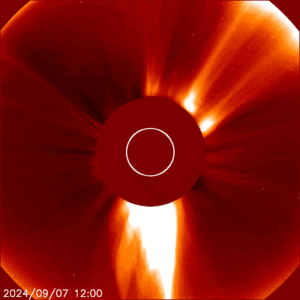The speed of light in a vacuum is the outright speed cutoff of the universe. Nothing will go quicker than 299,792 kilometers each second (186,000 miles each second), as indicated by Einstein’s work, as it would require an endless measure of energy to do as such. Notwithstanding, that doesn’t imply that light can’t be bested concerning speed under the right situation. In water, for instance, light is dialed back to 225,000 kilometers each second (139,800 miles each second), which is still really zippy, however can be bested by particles (for example in an atomic reactor) and result in Cherenkov light.
In any case, 225,000 kilometers each second is a long way from the slowest that light has at any point voyaged. In 1998, researchers had the option to ease back it to only 17 meters each second, or a humiliating 61.2 kilometers (38 miles) each hour. Easing back light was not a definitive point of the investigation. The group were quick to concentrate on Bose-Einstein Condensate (BEC), a condition of issue originally conjectured by Albert Einstein in view of crafted by hypothetical physicist Satyendra Nath Bose. At the point when a gas of bosons – subatomic power conveying particles that have number twist – are cooled to temperatures moving toward outright zero, they structure a solitary quantum object, frequently contrasted with it going about as a solitary iota.
“The wave capability of a BEC compares to the ground condition of a plainly visible quantum object,” one paper makes sense of. “At the end of the day, an assortment of molecules in a BEC acts as a solitary quantum element.” In this odd new condition of issue, first made in reality in 1995, you get a perceptible glance at quantum behavior.It has a lot of strange properties, including zero consistency. You get a portion of this stuff in a glass, it will creep up the side of the glass. They can support vortices that can be utilized to make simple dark openings, and detonate in a way like a cosmic explosion, named a bosenova. It’s unmistakable for what reason you’d need to concentrate on this stuff.

In 1998, researchers from the Rowland Organization for Science made a BEC by supercooling sodium molecules in a vacuum chamber. First they terminated laser radiates (moving at the standard speed of light) at the sodium, dialing back the particles as they ingest photons. Presently eased back, they were placed in one more exhibit of lasers, where the iotas were thumped back in anything bearing they came from, further easing back (and cooling) the haze of particles, kept set up by a strong attractive field.
Whenever this was finished and a haze of condensate was framed, the group terminated one laser across the width of it to set up quantum obstruction, while a subsequent laser was terminated across its length. Under these circumstances, the light was eased back emphatically.
“We get a light speed of 17 [meters for every second] for beat proliferation in a molecule cloud at first ready as a practically unadulterated Bose Einstein condensate (condensate division is ⩾90 percent),” the group composed of their examination. “Whether the cloud stays a condensate during and after beat spread is an issue that is past the extent of this Letter.”
While fulfilling, the group acknowledged they could improve.
“Before long, we prevailed with regards to halting a light heartbeat totally in a nuclear cloud cooled to a temperature simply over the progress temperature for BEC,” the group makes sense of on the Hau Lab site. “When the light heartbeat is eased back, compacted, and held inside the nuclear example, we switch off the control laser field suddenly and afterward walk out on sometime in the not too distant future. At the point when the control laser is betrayed, the light heartbeat is recovered: we can stop and controllably recover the light heartbeat.”

